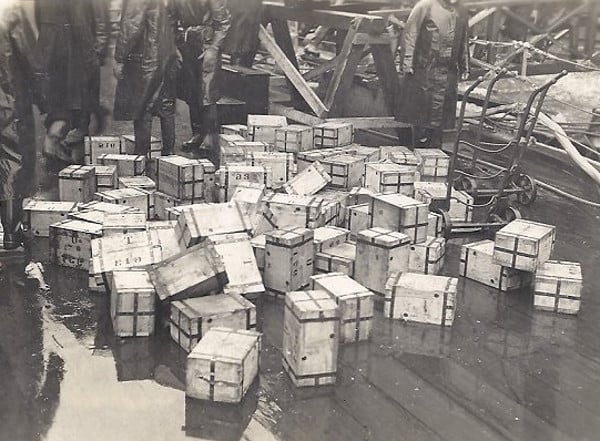Nazi Germany used operation Bernhard to practice counterfeiting British currency. It was initially intended to drop the notes over Britain to cause the British economy to crash during the Second World War. But what is Operation Bernhard?
Germany faked £130 million in British currency during World War II to bring down the British economy. The notes are among the best counterfeits ever made and are extremely difficult to distinguish from real currency.
The History of Operation Bernhard
The scheme was conceived and given its name by Schutzstaffel Sturmbannführer Bernhard Krüger, who assembled a group of 142 forgers, initially from Sachsenhausen concentration camp inmates and afterward from other sites, including Auschwitz. By the time Sachsenhausen was liberated in April 1945, the printing press had created 8,965,080 banknotes with a total value of £134,610,810.
The work of engraving the intricate printing plates, creating the appropriate rag-based paper with the proper watermarks, and cracking the code to generate valid serial numbers was challenging and began in 1942. Due to their near-impossible similarity to genuine currency, the notes are among the best counterfeits ever made.
On the presumption that most Britons would gather the notes and spend them, leading to inflation, the original strategy was to disrupt the British economy during the war by dropping the notes from aircraft. This plan was never carried out because, according to the theory, the Luftwaffe lacked the necessary aircraft to successfully transport the forgeries. By that point, SS foreign intelligence was in charge of the operation.
Beginning in late 1943, one million notes were printed each month. Many were moved from the SS’s headquarters to an old hotel close to Meran in South Tyrol, Northern Italy, where they were laundered and used to pay for German spies working for the Allies and strategic imports. There is no proof to support the claim that fake money was used to pay for the 1943 rescue of the detained former Italian ruler Benito Mussolini. (Source: Military History Fandom)
The End of Fake Pounds
Large quantities of fake pounds found their way into the hands of the Jewish underground after the Third Reich was defeated. The Jewish underground used the forged money to purchase supplies and to transport refugees to the Holy Land, including Chaim Shurik, a Polish printer who wrote a 20-page memoir of his counterfeiting days in Hebrew. The Jewish underground probably also had access to counterfeit dollars but avoided using them to maintain good relations with the Uni.
Although it is thought that the majority of the notes printed ended up at the bottom of Lake Toplitz near Ebensee, where divers discovered them in 1959, some were found in use in Britain for a long time before the Bank of England decided to stop issuing any notes greater than £5. The other denominations were reintroduced on February 21, 1964 (£10), July 9, 1970 (£20), and March 20, 1981 (£50), along with a new blue-colored £5 note on February 21, 1957.
Elyesa Bazna, a German spy who was paid with fake currency and then sued the German government for unpaid wages, was unsuccessful. (Source: Military History Fandom)
